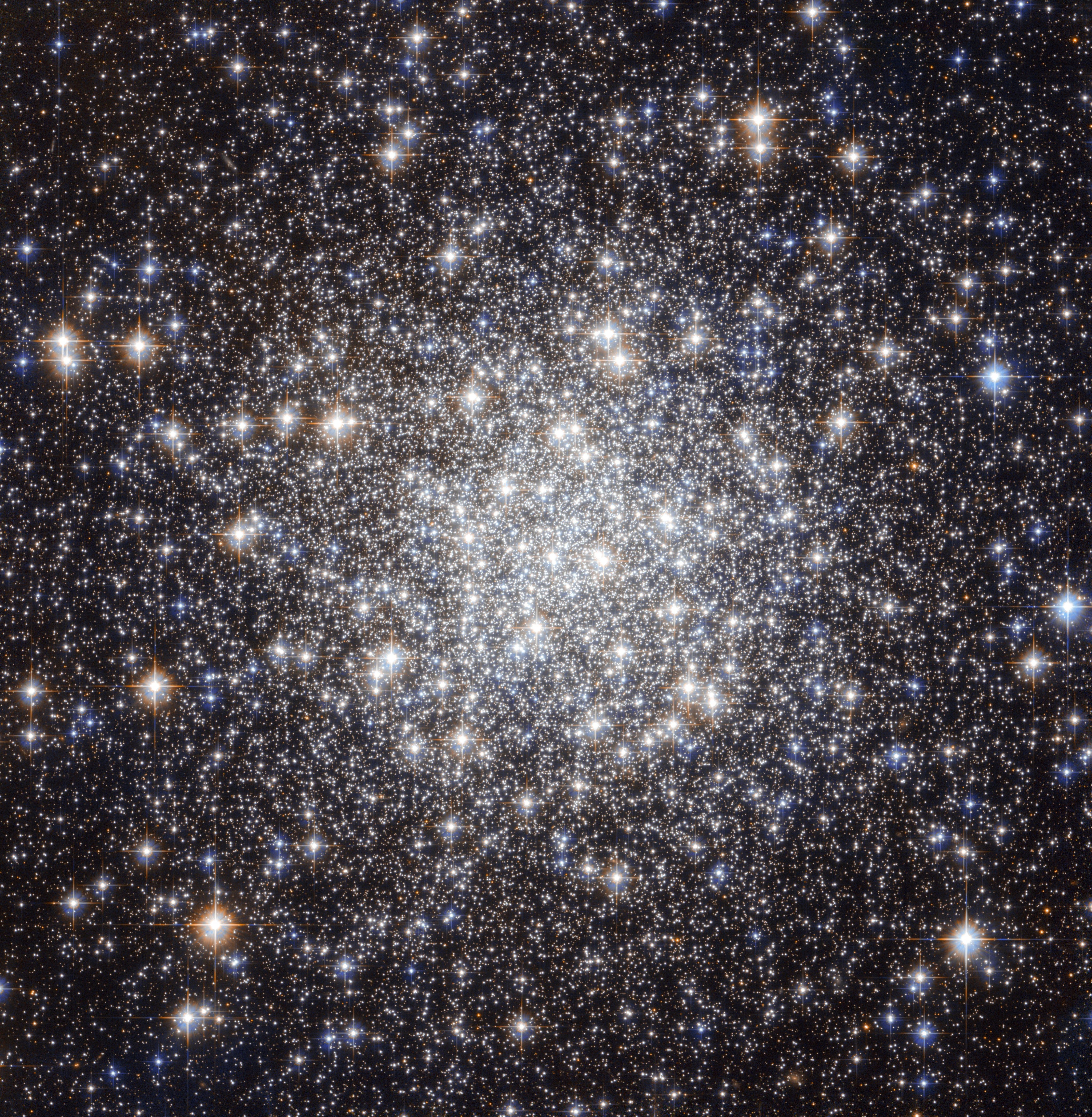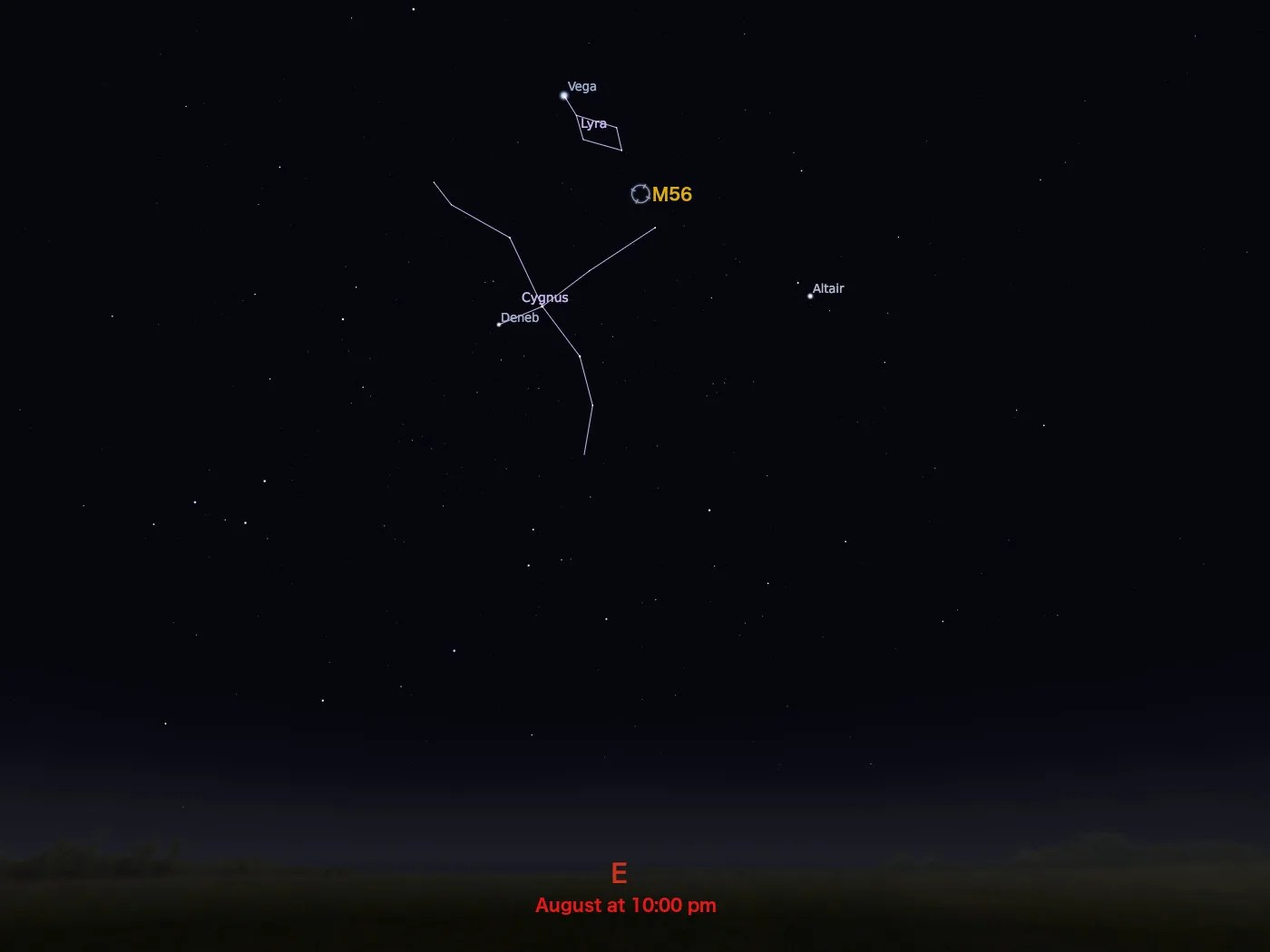Messier 56
This Hubble image of Messier 56 includes both visible and infrared observations.
Distance
33,000 light-years
Apparent Magnitude
8.3
constellation
Lyra
object type
Globular Cluster

Charles Messier discovered the globular cluster M56 in 1779. The cluster is located 33,000 light-years away from Earth in the constellation Lyra. It has an apparent magnitude of 8.3 and can be observed with a small telescope most easily in August.
This beautiful Hubble image of M56 was constructed using both visible and infrared observations. Using various observations by Hubble, astronomers have been able to study the chemical composition of the cluster. M56 has relatively few elements heavier than hydrogen and helium, which is a sign that its stars were born early in the universe’s history before many of the elements in existence today were formed in significant quantities.
Astronomers have found that most of clusters with this type of chemical makeup lie along a plane in the Milky Way’s halo. This suggests that such clusters were captured from a satellite galaxy, rather than being the oldest members of the Milky Way’s globular cluster system as astronomers had previously thought.
For more information about Hubble’s observations of M56, see:

Explore Hubble's Messier Catalog
The following pages contain some of Hubble’s best images of Messier objects.

Messier 1 (The Crab Nebula)
Better known as the Crab Nebula, Charles Messier originally mistook Messier 1 for Halley’s Comet, which inspired him to create…

Messier 2
Hubble's image of Messier 2 is comprised of visible and infrared wavelengths of light.

Messier 3
Messier 3 holds more than 500,000 stars.




